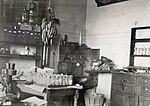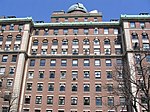Columbia University tunnels
Columbia University in New York City has an extensive tunnel system underneath its Morningside Heights campus connecting many of its buildings, used by the university as conduits for steam, electricity, telecommunications, and other infrastructure. Throughout their history, the tunnels have also been used for other purposes, mostly centering around transportation. During the first half of the 20th century, they were used by students to avoid aboveground traffic. When the university housed the Manhattan Project, they were allegedly used to move radioactive material between buildings. During the Columbia University protests of 1968, students used the tunnels to facilitate their occupation of buildings on campus. Throughout their history, the tunnels have been thoroughly explored by generations of students, and have been the subject of numerous campus legends. Though sections have been cordoned off by the university since the 1960s, either in response to the 1968 protests or rampant campus typewriter theft, many parts can still be legally accessed. Similar tunnels also exist under the affiliated Barnard College.
Excerpt from the Wikipedia article Columbia University tunnels (License: CC BY-SA 3.0, Authors).Columbia University tunnels
Broadway, New York Manhattan
Geographical coordinates (GPS) Address Nearby Places Show on map
Geographical coordinates (GPS)
| Latitude | Longitude |
|---|---|
| N 40.809 ° | E -73.961 ° |
Address
Uris Hall
Broadway 3022
10027 New York, Manhattan
New York, United States
Open on Google Maps






